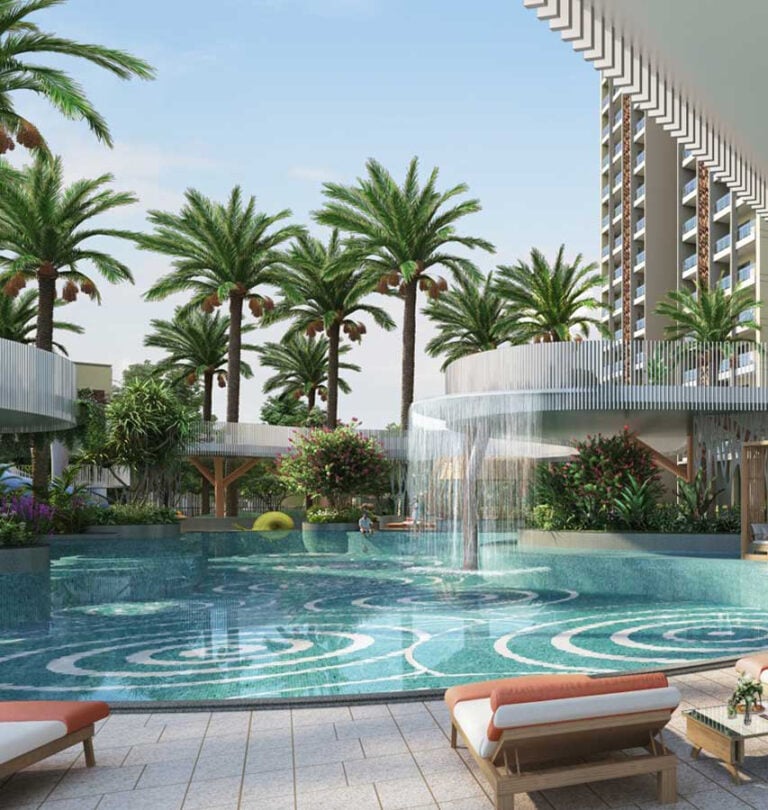The luxury real estate landscape in India is undergoing a remarkable transformation as environmental consciousness takes centre stage in high-end property development. According to market experts at TheLuxuryEstates.in, the convergence of opulence and sustainability is no longer just a passing trend but has become a significant movement reshaping buyer preferences across metropolitan cities. The demand for sustainable luxury homes India has seen remarkable growth in recent years, driven by a combination of environmental concerns, changing consumer preferences, and technological advancements in green building practices.
The Current Market for Sustainable Luxury Homes India
The sustainable luxury homes segment now constitutes 21% of the overall luxury housing market, a substantial increase from just 7% in 2019. This growth trajectory is expected to continue, with projections indicating that the luxury real estate market will reach an impressive $124.20 billion by 2030, growing at a CAGR of 21.81% from 2025. Notably, green buildings India are expected to contribute USD 39 billion to the economy by 2025, highlighting the economic significance of this sector.
“We’re witnessing a paradigm shift in how luxury is defined in Indian real estate,” says Rahul Sharma, a leading sustainable architecture consultant. “Today’s affluent buyers are increasingly prioritising environmental responsibility alongside premium amenities and locations.”
This shift is particularly evident in cities like Bangalore, Mumbai, and Delhi-NCR, with emerging markets in Kerala, Goa, and select Tier-2 cities also showing promising growth. The luxury real estate India market is witnessing this paradigm shift as approximately 40% of new luxury projects now incorporate eco-conscious features, signalling a fundamental change in development priorities.
Why Sustainable Houses in India Are Gaining Popularity
Developers are increasingly focusing on sustainable houses in India to meet the growing environmental consciousness among buyers. This surge in popularity can be attributed to several key factors:
- Environmental Awareness: A growing recognition of climate change impacts has prompted wealthy buyers to seek homes that align with their environmental values.
- Health and Wellness: Post-pandemic, there’s heightened awareness about indoor air quality and natural living environments, making sustainable homes more attractive.
- Technological Advancements: Innovations in green technology have made sustainable features more efficient and aesthetically pleasing, eliminating earlier compromises between luxury and sustainability.
- Government Incentives: Various tax benefits and incentives for green buildings have made sustainable luxury homes financially attractive investments.
The combination of these factors has created a robust market for properties that offer both exclusivity and environmental responsibility, particularly appealing to high-net-worth individuals and non-resident Indians looking for premium real estate investments.
Features of an Eco Friendly House in the Luxury Segment
An eco friendly house incorporates features like solar panels, rainwater harvesting, and energy-efficient appliances, but luxury sustainable homes take these elements to extraordinary levels of sophistication and integration. Key features include:
- Advanced Energy Management: Beyond basic solar panels, luxury sustainable homes feature integrated renewable energy systems that can reduce dependency on grid electricity by up to 70%.
- Water Conservation Systems: Comprehensive water management including rainwater harvesting, greywater recycling, and smart irrigation systems that can reduce water consumption by 30-50%.
- Smart Home Integration: IoT-enabled home automation systems that optimise energy usage while providing unparalleled convenience through voice-activated controls and automated environmental adjustments.
- Biophilic Design Elements: Architectural approaches that incorporate natural elements, maximising natural light, featuring living walls, and creating seamless indoor-outdoor living spaces.
- Premium Certifications: Most sustainable luxury properties boast prestigious certifications such as IGBC Platinum, LEED Gold or Platinum, and GRIHA 5-star ratings, validating their environmental credentials.
The modern eco friendly home combines luxury with responsibility, appealing to affluent environmentally-conscious buyers who refuse to compromise on either aspect.
Investment Benefits of Sustainable Homes India
Investing in sustainable homes India offers both environmental benefits and significant financial returns. The investment case for sustainable luxury properties is compelling:
- Value Appreciation: Green-certified luxury properties have shown 10-15% higher value appreciation compared to conventional luxury homes.
- Operational Cost Savings: Energy-efficient features reduce utility bills by 20-30%, translating to substantial savings over time.
- Market Demand: With growing awareness, demand for sustainable luxury homes continues to outpace supply, creating favourable conditions for investors.
- Future-Proofing: As environmental regulations become stricter, sustainable properties are already compliant, avoiding costly retrofits later.
The market data supports these benefits, with sales of ultra-luxury sustainable homes reaching ₹4,754 crore in 2024, representing a 37.8% year-on-year growth for properties above ₹4 crore.
Case Studies: Sustainable Luxury in Action
Several landmark projects exemplify the successful integration of sustainability and luxury in Indian real estate:
DLF Magnolias, Gurgaon has become a benchmark for sustainable luxury with its LEED Gold certification, extensive green spaces, and energy-efficient design. Strategically located near the DLF Golf Course, it combines premium location with environmental responsibility.
Emaar Amaris, Gurugram showcases how sustainability can enhance luxury living. This GRIHA pre-certified development features over 400 trees, electric buggies for internal transportation, and advanced water management systems, creating a sanctuary of sustainable opulence.
These projects demonstrate that sustainability and luxury are not mutually exclusive but rather complementary aspects that create exceptional living environments.
The Future Outlook
The sustainable luxury homes sector in India is poised for continued growth, with experts predicting several key developments:
- Expansion into Tier-2 and Tier-3 cities as awareness spreads beyond metropolitan areas
- Increased integration of renewable energy technologies
- Greater emphasis on wellness features and biophilic design
- Advanced automation systems becoming standard rather than premium additions
As environmental consciousness continues to grow and technology advances, sustainable luxury homes will likely become the new standard in premium real estate, rather than a niche segment.
For discerning buyers looking to invest in India’s luxury real estate market, understanding this shift towards sustainability is essential. The convergence of luxury and environmental responsibility not only offers a superior living experience but also represents a sound investment in a future where sustainability will be increasingly valued.


0 Comments